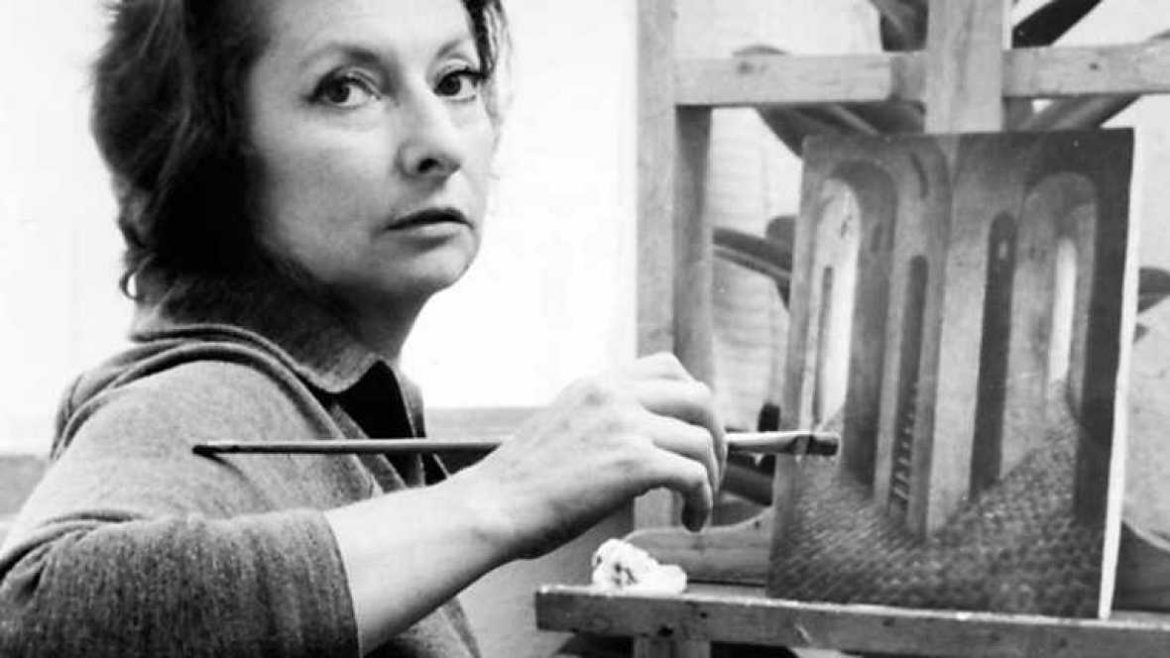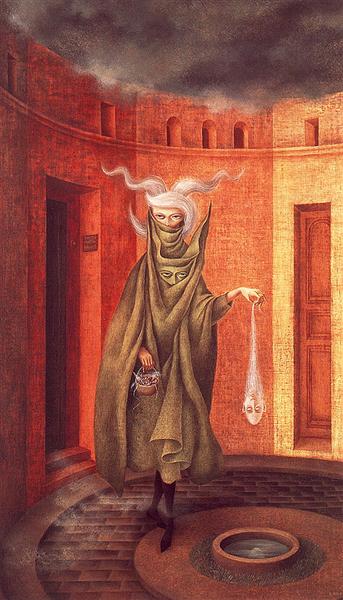
The last year brought not only the chaos of the pandemic but also a steady resurgence of interest in mystical and spiritual art. The British Museum, for example, recently held an exhibition called Tantra: Enlightenment to Revolution that intended to demystify the hedonistic associations of the term and explore the power of divine feminine energy – shakti – as well as the rise of radical goddess veneration in medieval India that continues to influence feminist thought and contemporary artistic expression.
While the Tantra exhibition closed in January 2021, many of its events and conversations with its curator, Imma Ramos, remain available on The British Museum YouTube channel.
The Guardian has described the surge of interest in occult arts as “a bit witchy” for a few years, but sees a recent turn toward a more engaged form of occult art: “Rather than the hipster witchery of a few years ago, this new spirituality is rooted in explorations of feminism, anti-colonialism and alternative power structures.”
One artist that has benefited from the revival of interest in the intersection of art, mysticism, and magic is a personal favorite, Spanish-Mexican artist Remedios Varo. Her extraordinary surrealist artwork is drenched in subtle Pagan symbolism hinting at Witchcraft, feminine power, and magical awareness.

Kati Horna, portrait of Remedios Varo, 1963 [Wikimedia Commons, fair use]
Varo, whose given name was María de los Remedios Alicia Rodriga Varo y Uranga, was born in Catalonia, Spain in 1908. Varo’s family moved across Spain and North Africa, exposing her to different cultures. Her father encouraged both her art and independent thought on religion, mysticism, and philosophy. He validated her interest in science and supplemented her early education with works by Jules Verne and Edgar Allen Poe.
Despite her mother’s devout Catholicism, Varo would rebel against religious orthodoxy and embraced liberal and universalist ideas. Varo trained at the Real Academia de Bellas Artes de San Fernando, in Madrid, the alma mater of Salvador Dalí, and would focus her attention on the works of Hieronymus Bosch, Braque, El Greco, Picasso, and Francisco de Goya while participating in the circles of surrealist European artists. She rebelled against her formal art instruction as well.

Remedios Varo, “Mujer saliendo del psicoanalista (Woman Leaving Psychoanalyst),” oil on canvas, 1960, private collection [fair use]
Varo left for Paris and ultimately arrived in Mexico during the height of Muralism. Unable to return to Spain because of the Spanish Civil War, Varo joined the circles of Frida Kahlo, Diego Rivera, Leonora Carrington, and Kati Horna. She would also continue her esoteric studies on Carl Jung, George Gurdjieff, and Helena Blavatsky while being spellbound by topics like alchemy, sacred geometry, and Witchcraft. Her interest in magic and mysticism was extensive, and it manifested in her works.
Varo died unexpectedly of a heart attack in 1963 just as her artwork was attracting serious critical recognition. French poet André Breton would comment that she was “the sorceress who left too soon.”
The artwork she left behind is described as mystical and revelatory. “Her female protagonists,” Artsy notes, “depicted as heroines or mythical figures, navigate precisely rendered symbolic worlds populated by machines, magical creatures, and objects coming to life. Varo’s women appear isolated and trapped by their environments, androgynous figures with ambivalent facial expressions, in some cases bound to machines or contraptions. Often seen as an autobiographical artist, Varo uses these women as her stand-ins exploring the occult, the Kabala, and alchemy.”
“With the same invisible violence of the wind dispersing the clouds,” Nobel Laureate and Mexican poet Octavio Paz wrote in his poem Apariciones y desapariciones de Remedios Varo, “but with greater delicacy, as if she painted with her eyes and not with her hands, Remedios clears the canvas and heaps perspicuity on its transparent surface.”
“Remedios laughs, but her laughter resonates in another world,” Paz added.
Varo would also conjure in her painting a worldview that also resonates with many branches of Paganism today. “The dream world and the real world are the same,” she said.

Remedios Varo, “The Juggler (The Magician),” Oil and inlaid mother of pearl on board, 1956, Museum of Modern Art [fair use]
Her drawings explore supernatural forces and otherworldly symbols and narratives. In “The Juggler (The Magician)” creates a pentagram from the main character’s face while also forming a witch’s hat. The juggler is also performing a physically impossible feat, one that could only be accomplished with magic, all the while captivating a crowd as a curious goat and owl look on from inside the magician’s hut. There’s also much more going on in the scene. We just have to look more carefully.
Interest in her work has intensified in the last year. Her artwork is fetching premium prices in the market, well into the six-figure range, breaking previous records despite the COVID-19 pandemic.
“A great Varo is worth its weight in gold,” Wendi Norris, of Gallery Wendi Norris in San Francisco, told Artsy. I think that is an underestimation. The interest in mysticism and the scarcity of her work because of her untimely death contribute to the market estimation of Varo’s work in dollars. But the value of her artwork goes beyond capitalistic markets. The messages Varo weaved into her art are more valuable, and there is a gradual and notable body of scholarship exploring them.
Varo rebelled and called out the fervent misogyny of many Surrealists and the critics and collectors. Professor Inés Ferrero Cándenas wrote in the Bulletin of Hispanic Studies that Varo “examines these theoretical conceptions about women while playfully subverting them.”
Indeed, Varo herself noted that “Everything that she did or undid, however disparate that looked to an observer with prejudices, was done for what should be done, that is, with courage and without fear of consequences.”
A woman looks at “Simpatia (La rabia del gato)” by Spanish-Mexican artist Remedios Varo at Christie’s in New York on May 20, 2019. [Photo by Laura BONILLA CAL / AFP]
While many recognize her technical skill, the content of her artwork is still considered elusive. Dina Comisarenco Mirkin wrote in Aurora, The Journal of the History of Art, that “the deeper message of her artistic production as a whole continues to elude us. Her personal image remains as one of the most aloof, mysterious, and enigmatic among all of the well-known women artists of her era, and her paintings await a clear and detailed interpretation, not merely as autobiographical testimonies, as is often done with women artists, but for their internal coherence.”
I don’t think it is so elusive to Pagan eyes. The imagery is squarely in our wheelhouse, mixing the magical and the mundane, revering the divine feminine, and recognizing the power that comes from an awareness of the self and the spiritual forces around us. Varo shows us how to be unbound.
The Wild Hunt is not responsible for links to external content.
To join a conversation on this post:
Visit our The Wild Hunt subreddit! Point your favorite browser to https://www.reddit.com/r/The_Wild_Hunt_News/, then click “JOIN”. Make sure to click the bell, too, to be notified of new articles posted to our subreddit.